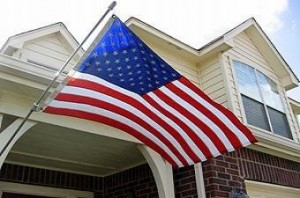 The nation is ill prepared to accommodate its rapidly growing older population where housing needs are concerned, according to a report by the Harvard Joint Center for Housing Studies and AARP Foundation.
The nation is ill prepared to accommodate its rapidly growing older population where housing needs are concerned, according to a report by the Harvard Joint Center for Housing Studies and AARP Foundation.
The report, entitled Housing America's Older Adults—Meeting the Needs of an Aging Population, estimates that the population of adults age 50 and above will reach 132 million by 2030, a jump of more than 70 percent since the year 2000.
But while their numbers are rapidly increasing, the amount of housing that is affordable, physically accessible, and located well is not, the report said.
"Recognizing the implications of this profound demographic shift and taking immediate steps to address these issues is vital to our national standard of living," said Chris Herbert, acting managing director of the Harvard Joint Center for Housing Studies. "While it is ultimately up to individuals and their families to plan for future housing needs, it is also incumbent upon policy makers at all levels of government to see that affordable, appropriate housing, as well as supports for long-term aging in the community, are available for older adults across the income spectrum."
The report found that the rising cost of housing often forces older adults (about 33 percent of Americans age 50 and above and about 37 percent of Americans 80 and above) to cut back in other areas such as food, health care, or retirement savings. And they may be paying those high housing costs for a home that does not even meet their needs, the report found.
Many of the nation's homes lack accessibility features such as no-step entries that are necessary in order for older Americans with disabilities cannot live comfortably in their homes, the report said.
Furthermore, transportation is an issue for older Americans who do not drive; often, they are forced to live in homes that are in car-dependent areas and are not near accessible transportation, which tends to isolate them from friends and family, the report said.
Another issue the aging population faces is that older adults who have disabilities or long-term health care needs are at risk of being prematurely institutionalized due to disconnects between the housing and healthcare systems, according to the report.
The younger baby boomers in their 50s now may not be able to cover the cost of housing in their retirement years due to lower incomes, increased debt, and the rising costs associated with owning a home. The report indicated that most people over age 45 prefer to remain in their current homes, an estimated 70 percent of them will need some type of long-term care by the age of 65 and their housing situation may not be adequate.
"As Americans age, the need for safe and affordable housing options becomes even more critical," said Lisa Marsh Ryerson, president of the AARP Foundation. "High housing costs, aging homes, and costly repairs can greatly impact those with limited incomes. The goal in our support of this report is to address the most critical needs of these households and it is AARP Foundation’s aim to provide the tools and resources to help them meet these needs now and in the future."

 theMReport.com Your trusted source for mortgage banking news
theMReport.com Your trusted source for mortgage banking news








